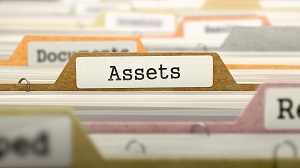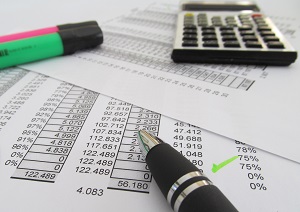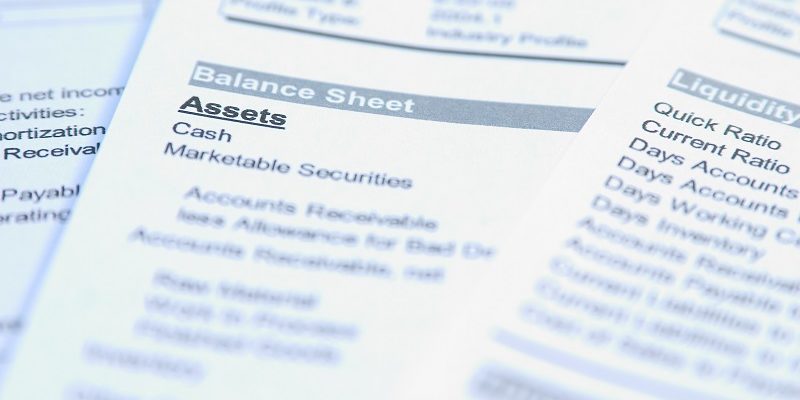Any homeowners association relies on the standard financial statements to assess its financial health. One of these statements is the balance sheet. But, what actually goes into HOA balance sheets? And what is the key to understanding them?
In this article:
- What Is a Balance Sheet?
- Parts of HOA Balance Sheets
- The Formula for a Successful HOA Balance Sheet
- How to Review HOA Balance Sheets
- Determine the Equity Ratio of your Community
- How to Better Understand Your Community’s Balance Sheet
What Is a Balance Sheet?
The balance sheets of an HOA offer the quickest and easiest snapshot of your HOA finances. It lists down your organization’s assets and liabilities based on the HOA general ledger. Check your balance sheet to get a feel for the financial strength of your community association.
Parts of HOA Balance Sheets
There are three sections that comprise a balance sheet: assets, liabilities, and equity. Accounts are categorized under each section with their corresponding amounts. When tallied, the total assets equal the total liabilities and equity, thus making the report “balanced.” Let’s break down the three parts of a balance sheet here:
1. Assets
 Assets are anything of monetary worth owned by your HOA. Under assets, accounts fall further under two categories: current assets and non-current assets. Current assets, also referred to as liquid assets, are items that you can easily convert into cash. Here are some examples of account titles that fall under current or liquid assets:
Assets are anything of monetary worth owned by your HOA. Under assets, accounts fall further under two categories: current assets and non-current assets. Current assets, also referred to as liquid assets, are items that you can easily convert into cash. Here are some examples of account titles that fall under current or liquid assets:
- Cash in Bank
- Petty Cash
- Reserve Funds
- Inventory
- Accounts or Assessments Receivable
- Prepaid Insurance
Conversely, non-current assets or non-liquid assets are those you can’t convert into cash as easily. This is where you will find fixed assets and intangible assets. Here are some examples of account titles that fall under non-current or non-liquid assets:
- Land
- PPE (Property, Plant, and Equipment)
- Intellectual Property such as patents and trademarks
- Long-Term Investments
2. Liabilities
 These are amounts owed by your HOA to various vendors, providers, and parties. This will be anything owed by the association such as maintenance fees, improvements, or vendor bills. Anything that costs money will be a liability. Depreciation on community structures, vehicles, or equipment also counts as a liability. Therefore, you must add these accounts to the HOA balance sheet.
These are amounts owed by your HOA to various vendors, providers, and parties. This will be anything owed by the association such as maintenance fees, improvements, or vendor bills. Anything that costs money will be a liability. Depreciation on community structures, vehicles, or equipment also counts as a liability. Therefore, you must add these accounts to the HOA balance sheet.
Like assets, liabilities are further classified into current and non-current liabilities. Current liabilities are amounts due within a year. Here are some examples of account titles that fall under current liabilities:
- Accounts Payable
- Rental Fee
- Utilities
- Wages
- Prepaid Assessments
- Temporary Loans
- Interest
On the other hand, non-current or long-term liabilities are amounts due after a year. Here are some examples of account titles that fall under non-current liabilities:
- Deferred Revenue
- Long-Term Loans
- Long-Term Lease Obligations
3. Equity
Also known as shareholders’ or owner’s equity, you compute this section by deducting liabilities from assets. It refers to the ownership of assets minus all the debts. In other words, it is the value left after subtracting all the negative (liabilities) from the positive (assets).
The Formula for a Successful HOA Balance Sheet
Assets = Liabilities + Equity
This is the basic formula that your HOA balance sheet should follow. It will provide a general snapshot of how well your association is doing financially at a certain point in time, whether it be at the end of every month, quarter, or year. As such, you must include it in every official financial statement.
If you follow the formula and your equity is positive, good job! Your association is doing well and is bringing in more money than it owes. If equity is negative, it means that you should quickly reevaluate your finances. Why? Because more money is being spent than is coming in.
How to Review HOA Balance Sheets
 Understanding a balance sheet requires some level of accounting knowledge. But, as not all volunteers in an HOA board come with an accounting background, you must at least know the basics.
Understanding a balance sheet requires some level of accounting knowledge. But, as not all volunteers in an HOA board come with an accounting background, you must at least know the basics.
An HOA balance sheet must stay balanced. Your total assets must equal your total liabilities plus equity — it’s in the formula. If you find your balance sheet imbalanced, turn to your ledgers. Check your general ledger, which is should contain all financial transactions. Compare it with your balance sheet to see where the inconsistency lies.
Most imbalances stem from human errors. If you are constantly finding errors in your balance sheet, consider investing in an accounting software. Alternatively, you might want to outsource HOA financial management entirely. There are plenty of companies that offer financial management services, including accounting.
Determine the Equity Ratio of your Community
 Not all equity is created equal. Having equity of $5,000 would be great for a small HOA that only brings in $8,000 monthly but not so great if your community collected $100,000 monthly. That’s where the equity ratio comes in. To calculate your equity ratio, take your total equity and divide it by your total assets.
Not all equity is created equal. Having equity of $5,000 would be great for a small HOA that only brings in $8,000 monthly but not so great if your community collected $100,000 monthly. That’s where the equity ratio comes in. To calculate your equity ratio, take your total equity and divide it by your total assets.
Equity Ratio = Equity / Assets
Using the same example from above, the smaller HOA would have an equity ratio of 63% while the larger HOA’s ratio would be only 5%. When listed as a ratio, it becomes quite clear which HOA is more financially sound despite having the same total equity.
HOA balance sheets, whether prepared monthly, quarterly or annually, are a good representation of the daily operation of your community association. Negative equity on an annual sheet does not only mean that an HOA has lost money over the year, but it also translates to flawed day-to-day operations which you must reconsider.
Just as with financial statements, the more frequent you create balance sheets, the more insight they can provide into the financial workings of a community association. While it is perfectly acceptable to release financial and balance sheets annually, it is better to release them monthly or quarterly. The more information your board of directors has to work with, the more effectively they can operate.
How to Better Understand Your Community’s Balance Sheet
Knowing the ins and outs of HOA balance sheets is the first step towards understanding them. Once you know the definition of each section and how they are broken down categories, analysis becomes much easier. This, in turn, will help you and your fellow board members make informed financial decisions. In the end, your community will benefit from it.
Most HOAs find it tough to navigate through the complicated world of finance. If you find yourself in the same boat, consider hiring a professional to take care of your financial management needs. In that case, keep us in mind.
RELATED ARTICLES:
- What Is An HOA Income Statement?
- What Is An HOA Statement of Receivables?
- Closing The Books? Use This Year End Checklist

